AJD Cap Company, founded in 1960 by Irving Joel, started as a small business specializing in custom-designed baseball caps for local sports teams. What began as a modest venture quickly gained traction due to the company’s unwavering commitment to quality and innovation. AJD’s headwear, known for its superior craftsmanship, caught the attention of various sports teams, significantly boosting the company’s growth and reputation. In the early 1970s, the company’s reach expanded dramatically when the Baltimore Orioles chose AJD to design their unique double-knit polyester caps, marking a notable moment in Major League Baseball history.
Despite its growing reputation, AJD faced stiff competition from industry giants like Sports Specialties, Starter, and New Era. Unlike these larger competitors, AJD lacked the financial power to secure professional athlete endorsements, compelling them to innovate vigorously to stay relevant. This drive for originality led to the creation of some of the most distinctive and vibrant designs of the 1980s. AJD’s headwear, characterized by bright colors and bold patterns, stood out in a crowded market. Their commitment to unique designs paid off when they launched the iconic “Zubaz” line of caps and pants in the early 1990s, featuring eye-catching animal prints in team colors. This line became a massive hit, cementing AJD’s place in the world of sports merchandise.
However, as fashion trends shifted in the mid-1990s towards more conservative styles, the demand for AJD’s bold designs waned. The Zubaz line, once the epitome of loud and proud fashion, saw a decline. Despite this downturn, the legacy of AJD’s innovative spirit lived on. In a nod to the brand’s influential designs, Adidas revived the Zubaz prints for their 2013 NCAA uniforms, demonstrating the enduring impact of AJD’s creative contributions to sports fashion. The company’s journey, marked by resilience and adaptability, highlights the dynamic interplay between design innovation and market demands in the ever-evolving world of fashion.
How to tell if AJD is vintage from the logo
AJD has a rich history in the fashion industry, known for its distinctive logo that has evolved over the years. The variations in the logo can help determine the era in which a particular item was made. Below is a guide to identifying vintage AJD pieces based on their logo from the 1970s to the 1990s.
1970s to 1990s AJD logo
- The logo features the initials “AJD” prominently.
- The letters are bold and capitalized, creating a strong visual impact.
- The “A” and “J” are connected in a unique design, with the tail of the “J” forming the base of the “A”.
- There is a horizontal line running through the middle of the letters, adding a distinctive style.
- The logo often appears in a dark blue color.
- This era of the logo emphasizes simplicity and boldness, reflecting the design aesthetics of the time.
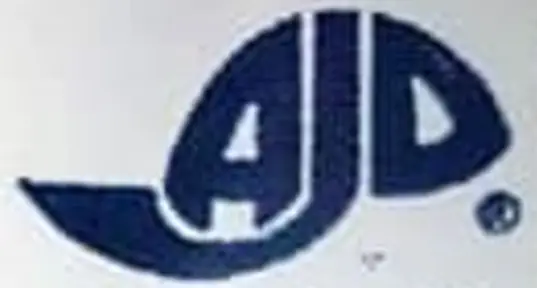
1970s to 1990s AJD logo
How to tell if AJD is vintage from the tags
AJD has a rich history of producing high-quality caps, particularly known for their official sports merchandise. Over the decades, their tags have evolved, reflecting changes in branding, manufacturing locations, and design trends. Here’s a guide to help you identify the era of your AJD cap based on the tags.
Can’t identify those vintage tags or labels? Upload a picture on our vintage tag identification page, and we’ll help you out!
1970s vintage AJD tags
- Bold red AJD logo with “Made in U.S.A.”
- 100% nylon, double knit material mentioned
- Size information such as “One Size Fits All” often present
- Tags usually have a clean, straightforward design
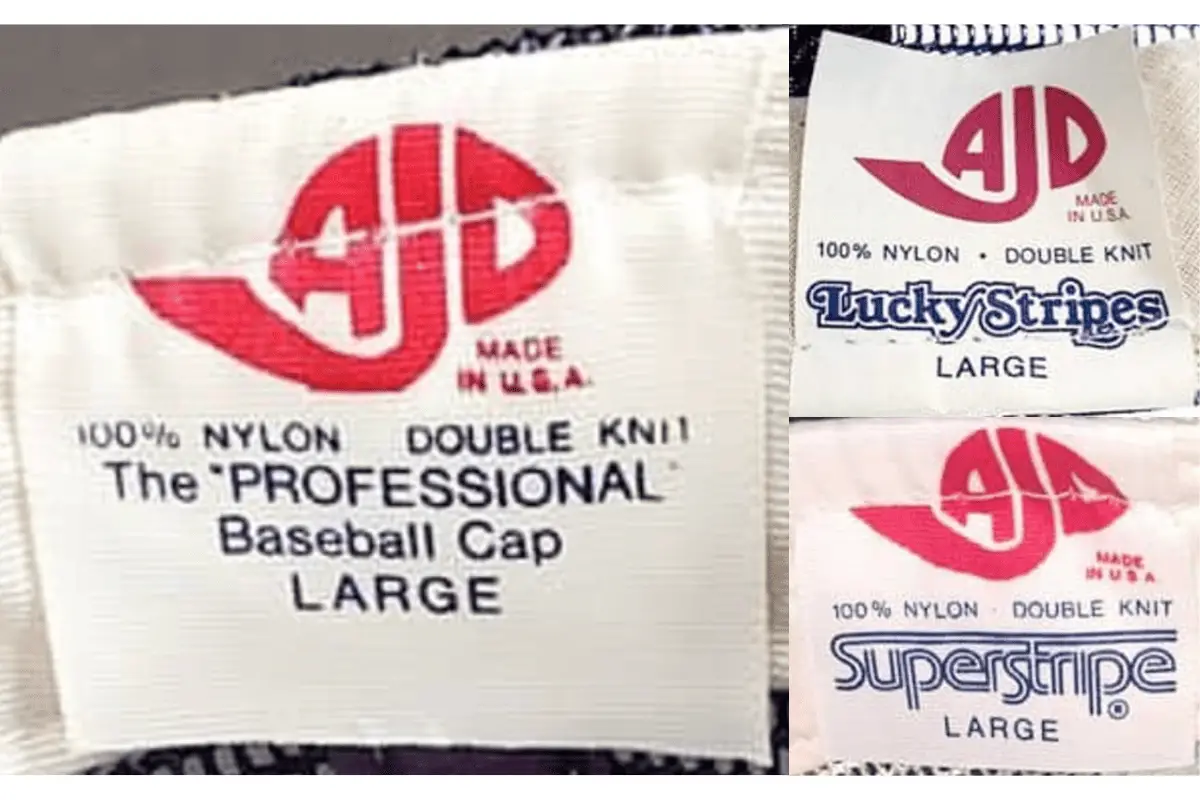
1970s AJD tags
1980s vintage AJD tags
- Introduction of official licensed product logos (e.g., NFL, NBA)
- Bold AJD logo prominently displayed
- Manufacturing location (e.g., “Made in U.S.A.”) still a key feature
- Various materials indicated, including nylon and rayon
- Tags began to include more descriptive text and professional titles
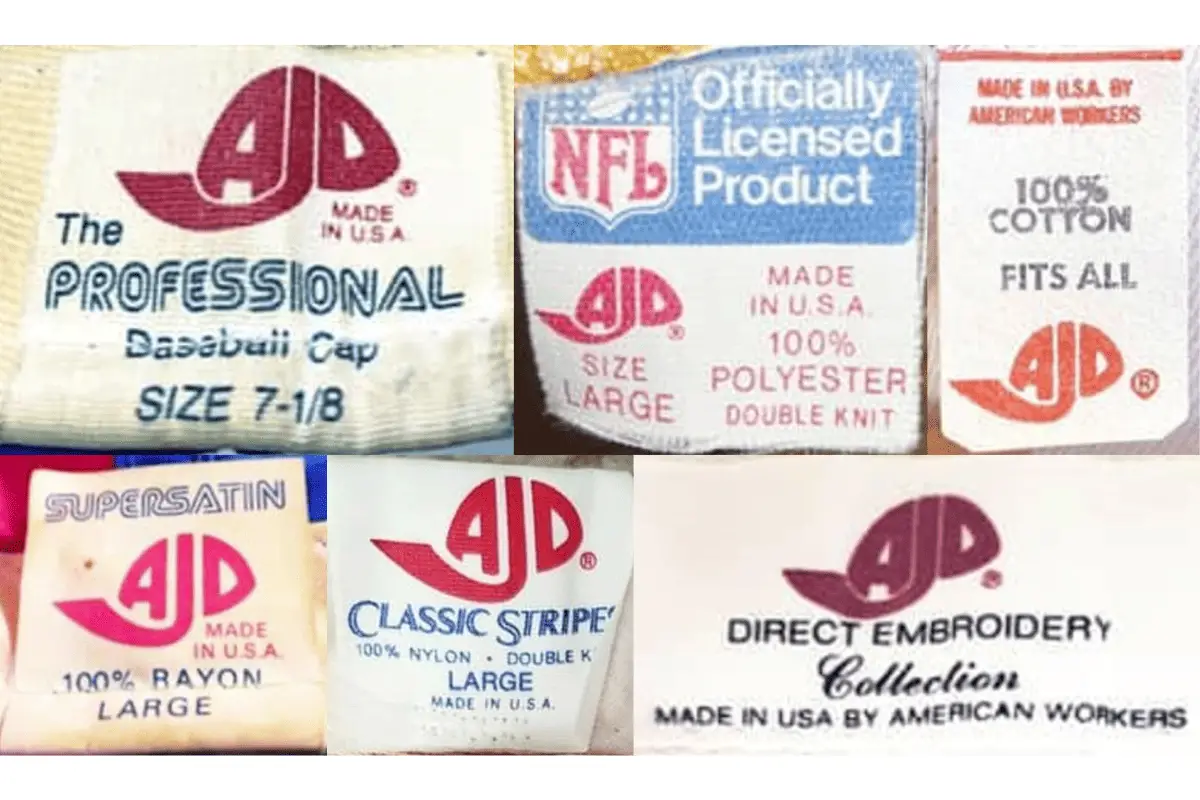
1980s AJD tags
1990s vintage AJD tags
- Continuation of official sports merchandise logos
- Introduction of more detailed branding, such as “The Professional Baseball Cap”
- Manufacturing locations started to vary (e.g., “Made in Indonesia”)
- Tags often feature size information, sometimes in a larger font
- More variations in design and text layouts
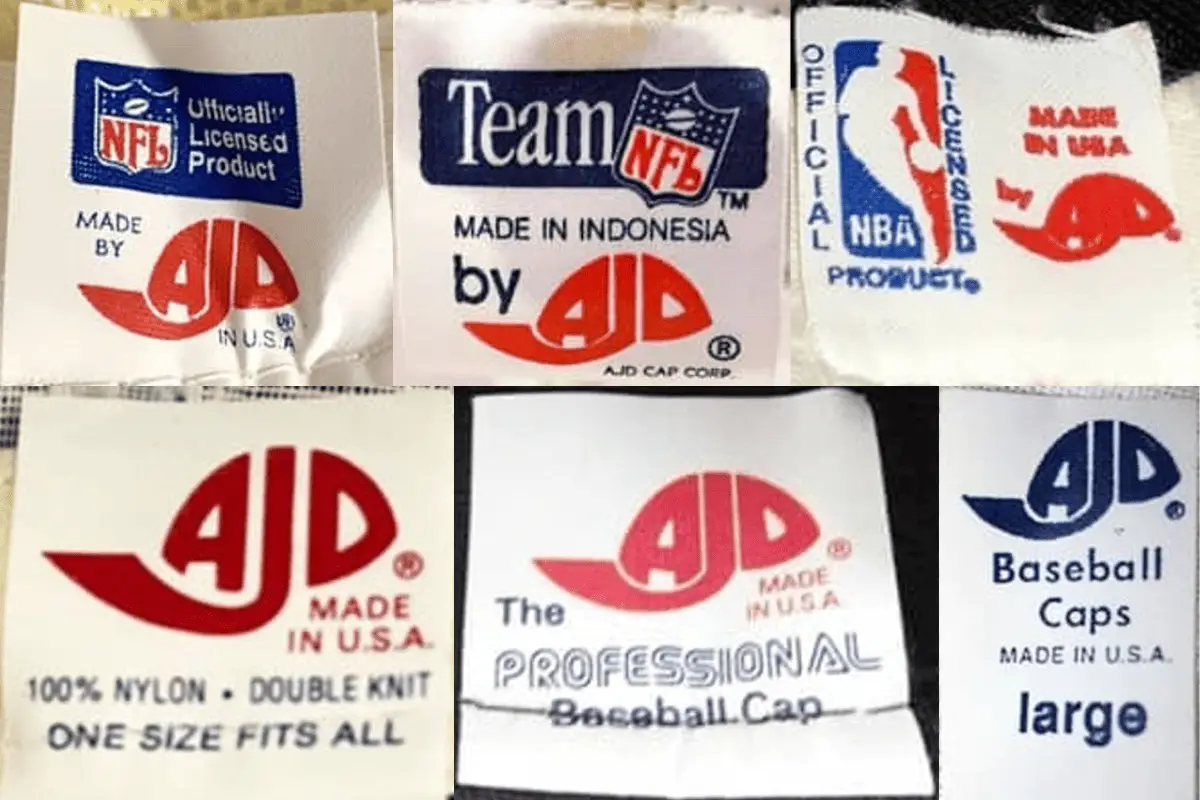
1990s AJD tags
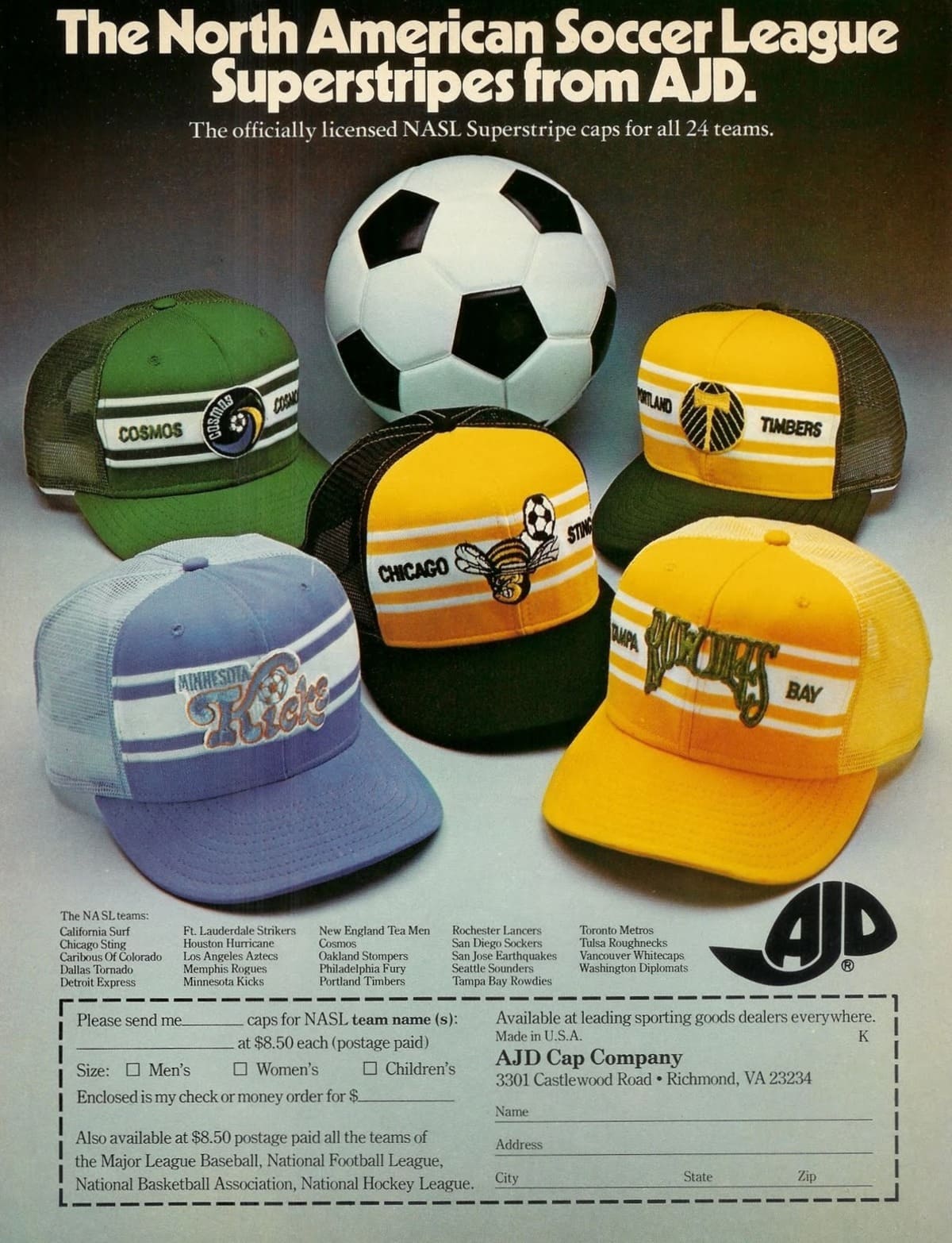

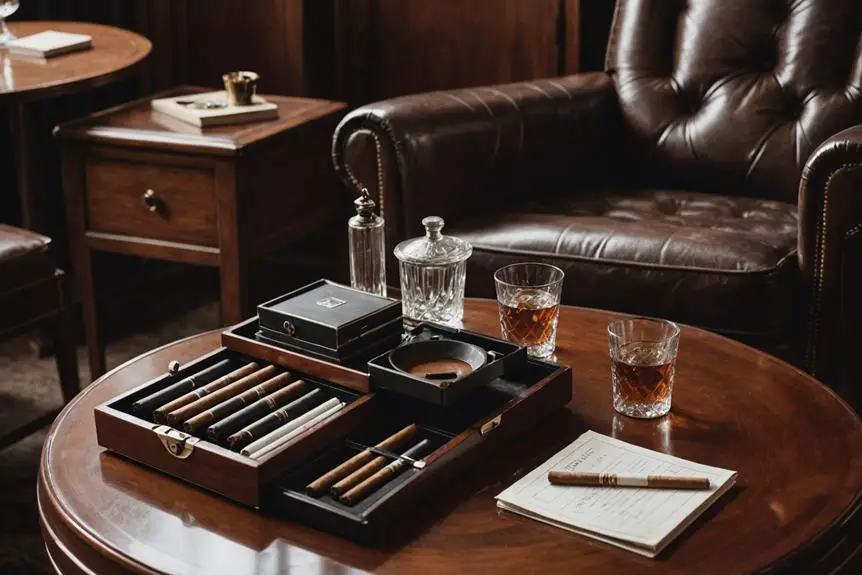
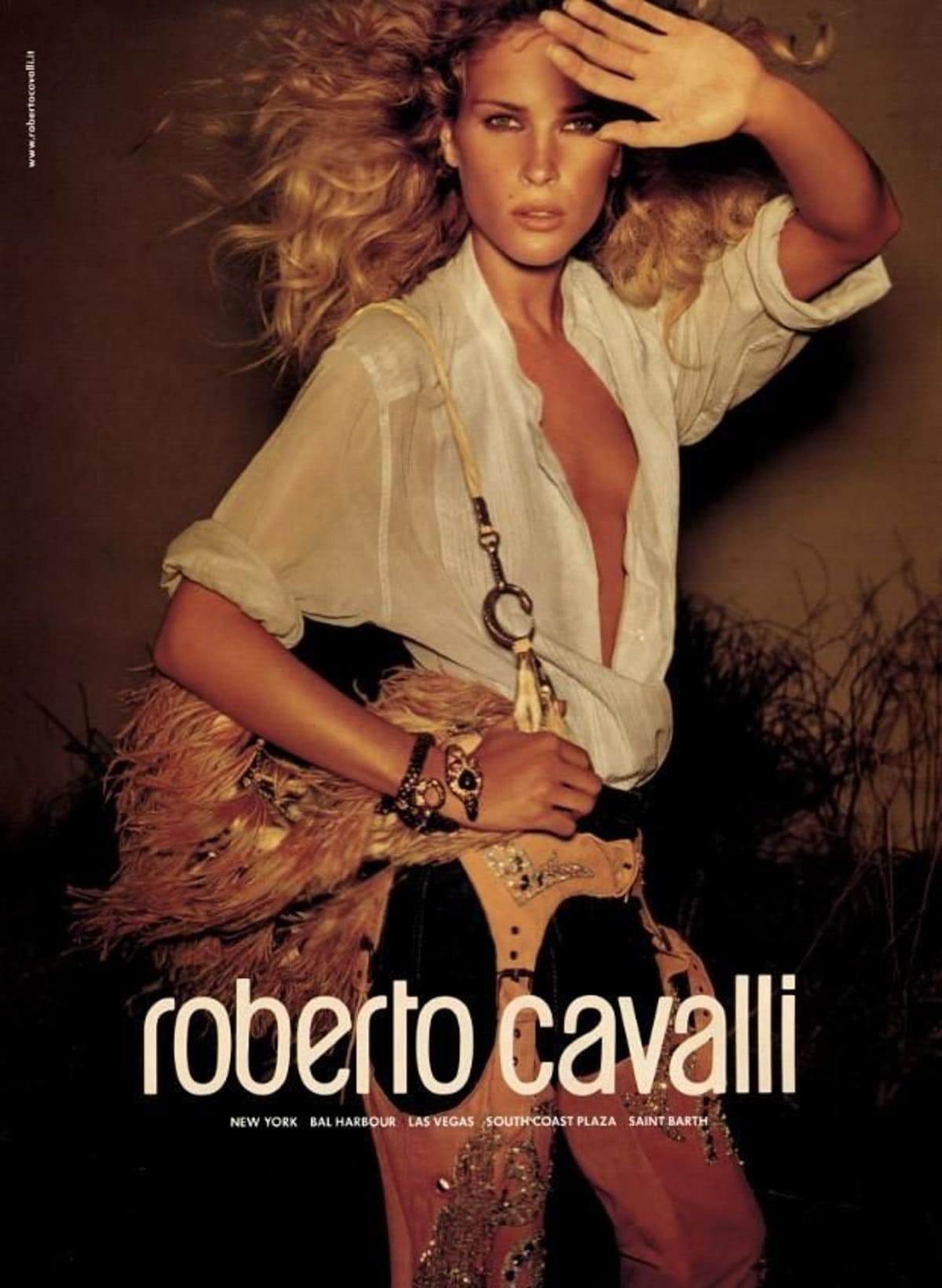

ajd produced the very first white super bowl hat that was distributed to players in a locker room.Circa 1983, distributed by joe gelardi, at RFK STADIUM. The hats were worn by all players and tv analysts, Irv Cross and Brent Musberger.How do we know this to be true? I WAS THERE! I PAID OFF SECURITY TO GAIN ACCESS TO THE LOCKERROOM…MY NAME IS COOL BREEZE,JOE GELARDI!
I really enjoy looking through on this internet site, it contains great content.
Have you ever considered publishing an e-book or guest authoring on other websites? I have a blog based on the same subjects you discuss and would love to have you share some stories/information. I know my subscribers would appreciate your work. If you’re even remotely interested, feel free to send me an e mail.